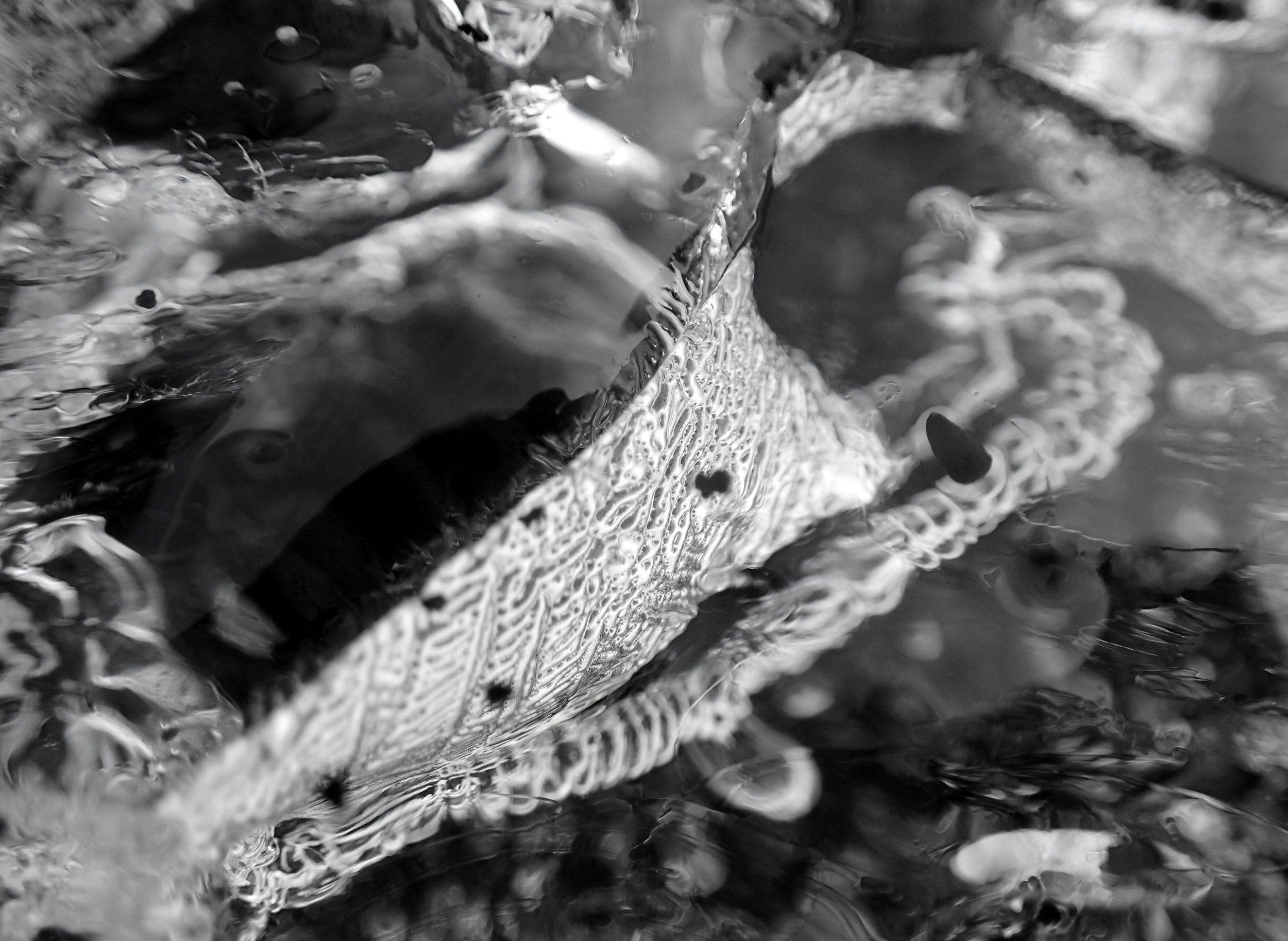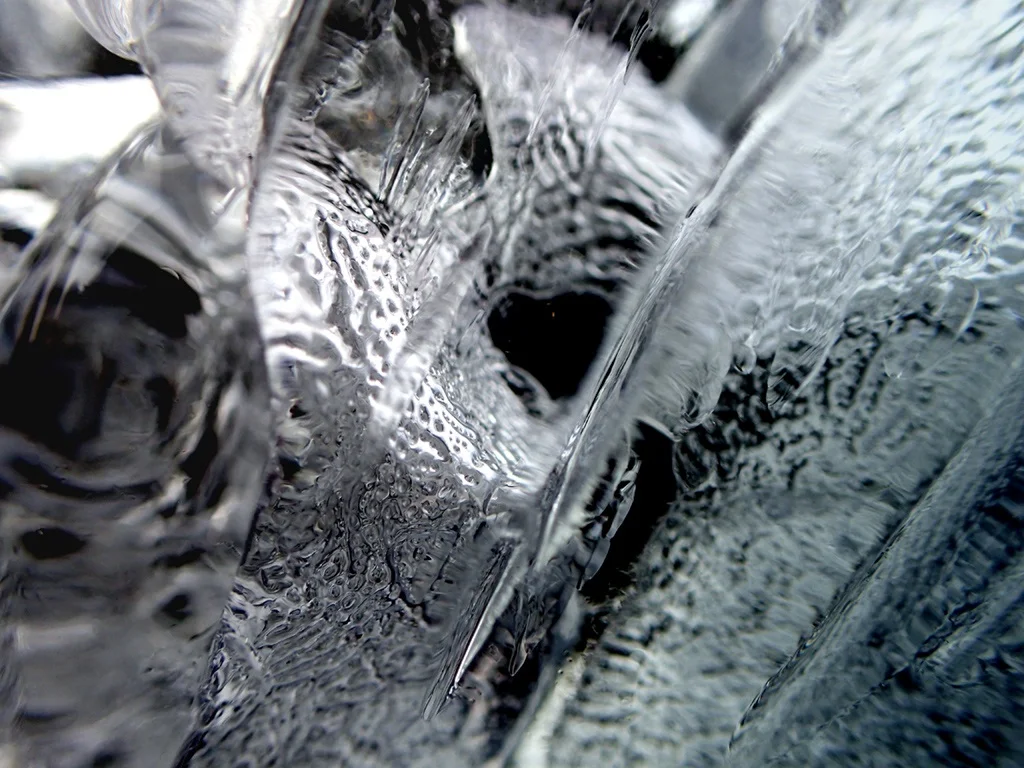Glacial Cosmologies
The images in this series were taken in the High Arctic off the coast of Svalbard, Norway, in June 2017 and Iceland, June 2018. They are views into pieces of recently calved glacial ice—ice that had washed up on the shore after calving from a melting glacier. The ice was scanned by sliding the flat lens of a waterproof camera incrementally along it’s surface, a process that revealed intricate internal structures not visible on the surface of the ice. These are known as Tyndall Formations, after the 19th-century Arctic explorer and physicist John Tyndall, who first noted the complex forms that occur in melting glacial ice as air bubbles trapped internally react to the intense radiant heat of the solstice sun. The bubbles contain gases such as methane and CO2, along with sediment, pollens and pollutants from centuries past, and they literally bloom into flower-shaped structures just before the ice melts, releasing the gases held within into the atmosphere. Glaciers have served as repositories of both atmospheric history and cultural memory, and this work records this in a way is specific to individual glaciers.
Installation view, Glacial Cosmologies Series, National Geographic Endurance.


















